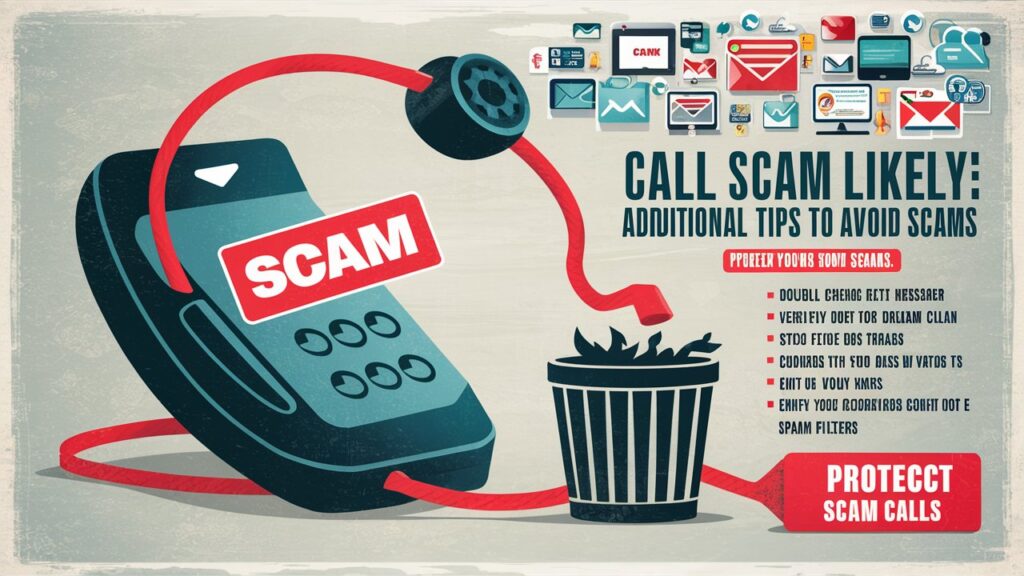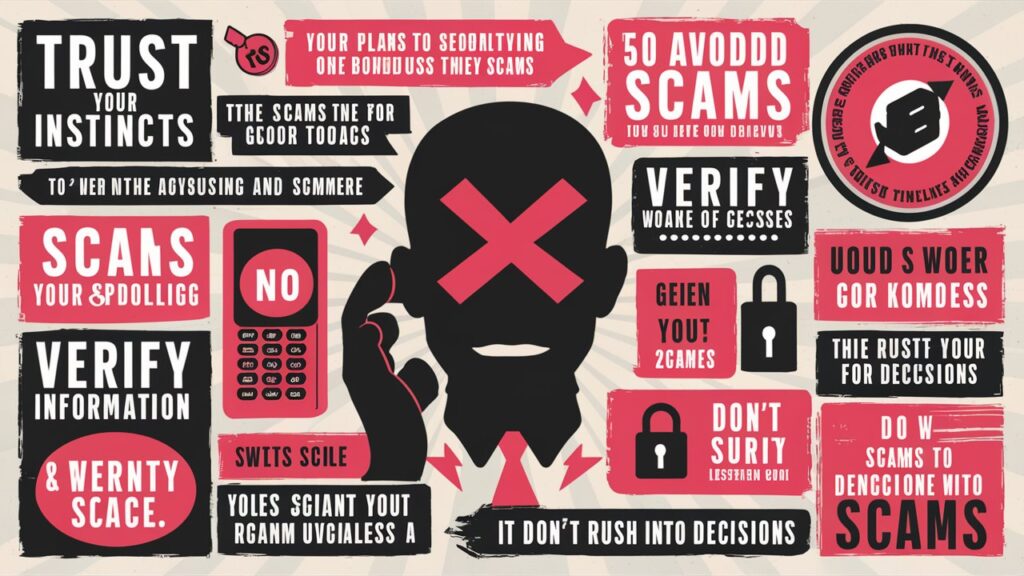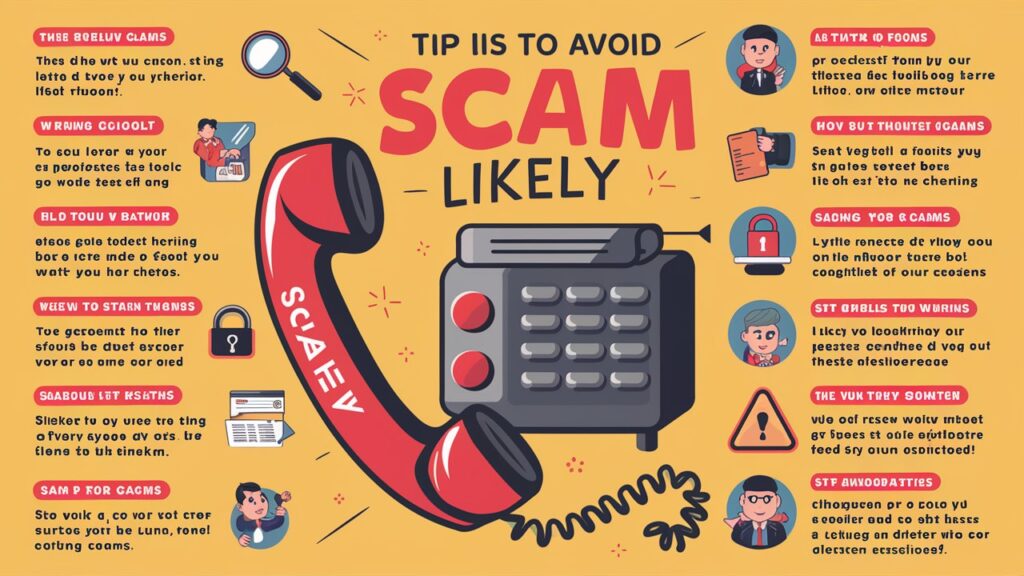In today’s digital age, receiving phone calls labeled as “Scam Likely” has become increasingly common. This label is a red flag that your phone carrier has identified the call as potentially being associated with fraudulent activity. Understanding what “Scam Likely” means, how it works, and what actions you should take can help protect you from falling victim to scams and fraud.
What is a “Scam Likely” Call?
A “Scam Likely” call is an incoming phone call that your mobile carrier has flagged as potentially being a scam or spam attempt. The label is intended to serve as a warning to you, the recipient, suggesting that the call may not be legitimate. It’s a proactive measure to help you avoid scams that could lead to identity theft, financial loss, or other unwanted consequences.
How Does It Work?
The technology behind “Scam Likely” calls involves sophisticated algorithms and databases maintained by mobile carriers. These systems analyze call patterns and compare them against known indicators of fraud. Several factors contribute to the decision to label a call as “Scam Likely”:

Call Frequency and Duration
One of the primary indicators of a potential scam is the frequency and duration of calls from a particular number. If a number makes numerous short calls within a short period, it raises a red flag. Scammers often use automated systems to make many calls quickly, hoping to catch unsuspecting individuals.
Call Origin
Calls originating from certain geographic areas known for a high incidence of scams are more likely to be flagged. Scammers often operate from regions with a known history of fraudulent activity, and carriers use this information to help identify suspicious calls.
Caller ID Spoofing
Caller ID spoofing involves manipulating the information displayed on the recipient’s phone to make it appear as though the call is coming from a trusted source. If the caller ID does not match the actual caller or if it displays information that seems suspicious, the call may be flagged as “Scam Likely.”

Database of Known Scammers
Mobile carriers maintain extensive databases of phone numbers associated with known scammers. These lists are compiled from reports of fraudulent activity and other sources. When a number matches one on these lists, it is more likely to be flagged as a scam call.
What to Do When You See “Scam Likely”
When you receive a call labeled as “Scam Likely,” it’s important to take the following steps to protect yourself:
Don’t Answer
The safest course of action is to ignore calls labeled as “Scam Likely.” By not answering, you avoid engaging with potential scammers who may try to trick you into revealing personal information or making financial transactions.

Block the Number
Most smartphones have features that allow you to block specific numbers. If you repeatedly receive calls from a number flagged as “Scam Likely,” use this feature to prevent future calls from that number. Blocking the number helps reduce the chances of being targeted by the same scammer.
Also Read: us9514961195221: The Fake USPS Tracking Number Scam
Report the Call
Some carriers offer options for reporting scam calls. By reporting these calls, you contribute to the broader effort to identify and shut down fraudulent operations. This also helps protect other users from falling victim to similar scams.
Be Cautious
Even if you answer a call that is flagged as “Scam Likely,” exercise caution and avoid providing any personal information or agreeing to requests made during the call. Scammers often use high-pressure tactics and persuasive language to manipulate victims, so it’s crucial to remain vigilant.
Additional Tips to Avoid Scams
In addition to being cautious with calls labeled as “Scam Likely,” there are other measures you can take to protect yourself from scams further:

Install a Call-Blocking App
Call-blocking apps are designed to help identify and block spam and scam calls. Many of these apps use advanced algorithms to detect known scam numbers and automatically block them before they reach your phone. Research and choose a reputable app that fits your needs.
Keep Your Phone Software Updated
Regular updates to your phone’s operating system and apps often include improvements to security features, including spam protection. Keeping your phone software updated ensures that you benefit from the latest security enhancements and bug fixes.

Educate Yourself About Common Scams
Being informed about common scams and their tactics can significantly reduce your risk of falling victim. Familiarize yourself with scammers’ typical strategies, such as phishing emails, fake tech support calls, and fraudulent financial schemes. The more you know, the better you can protect yourself.

Understanding the Impact of Scam Calls
Scam calls can have serious consequences beyond just the immediate inconvenience. Falling victim to a scam can lead to:
Identity Theft
Scammers often seek to obtain personal information that can be used to commit identity theft. This may include Social Security numbers, bank account details, or credit card information. Identity theft can result in significant financial loss and long-term damage to your credit.
Financial Loss
Many scams involve financial transactions, either through direct requests for money or by tricking victims into revealing payment information. Losing money to a scam can be devastating, particularly if the amount is substantial or if it affects your financial stability.

Emotional Distress
Dealing with scams and their aftermath can cause emotional stress and anxiety. Victims may feel violated, embarrassed, or overwhelmed by the experience. It’s important to seek support if you find yourself struggling with the emotional impact of a scam.
How Carriers Work to Combat Scams
Mobile carriers are continually working to improve their systems for detecting and preventing scam calls. This involves:
Enhancing Algorithms
Carriers are constantly refining their algorithms to identify potential scams better. This includes analyzing call patterns, improving data accuracy, and adapting to new scam tactics.

Collaborating with Industry Partners
Carriers often collaborate with other industry stakeholders, including regulatory bodies and technology providers, to share information and resources. This collective effort helps improve the effectiveness of scam detection and prevention measures.
Educating Users
Many carriers provide educational resources to help users recognize and avoid scams. This may include information on their websites, notifications about known scams, and tips for safeguarding personal information.
Legal and Regulatory Measures
In addition to the efforts of individual carriers, there are legal and regulatory measures in place to address scam calls:

The Telephone Consumer Protection Act (TCPA)
The TCPA is a U.S. law that regulates telemarketing calls and auto-dialing systems. It sets limits on unsolicited calls and requires businesses to obtain consent before making marketing calls. This law helps reduce the volume of unwanted and potentially fraudulent calls.
The National Do Not Call Registry
The National Do Not Call Registry allows individuals to opt out of receiving unsolicited marketing calls. While it does not eliminate all scam calls, it helps reduce the number of legitimate telemarketing calls, making it easier to identify potential scams.
The Truth in Caller ID Act
The Truth in Caller ID Act prohibits the use of misleading or inaccurate caller ID information. This law helps address issues related to caller ID spoofing, a common tactic used by scammers to disguise their true identity.

The Future of Scam Prevention
As technology evolves, so too do the tactics used by scammers. To stay ahead of these threats, ongoing advancements in scam detection and prevention are crucial. This includes:
Artificial Intelligence and Machine Learning
Artificial intelligence (AI) and machine learning are being used to enhance scam detection capabilities. These technologies can analyze vast amounts of data to identify patterns and anomalies associated with fraudulent activity, improving the accuracy of spam detection.
Enhanced Caller Authentication
Caller authentication technologies, such as STIR/SHAKEN, aim to verify the legitimacy of incoming calls. These technologies help reduce the effectiveness of spoofing by ensuring that the caller’s identity is accurately represented.

Increased Consumer Awareness
Raising awareness about scams and their tactics is essential for preventing fraud. Ongoing education and outreach efforts help individuals recognize and respond more effectively to potential scams.
Conclusion
The “Scam Likely” label is a valuable tool for protecting yourself from fraudulent calls. By understanding how it works and taking appropriate actions, you can reduce the risk of falling victim to scams. Stay informed, be cautious, and utilize available resources to safeguard your personal information and financial well-being. Remember, while the technology behind scam detection continues to advance, your awareness and vigilance are key in combating fraud.


1 thought on “Scam Likely: What You Need to Know About This Warning Signal”